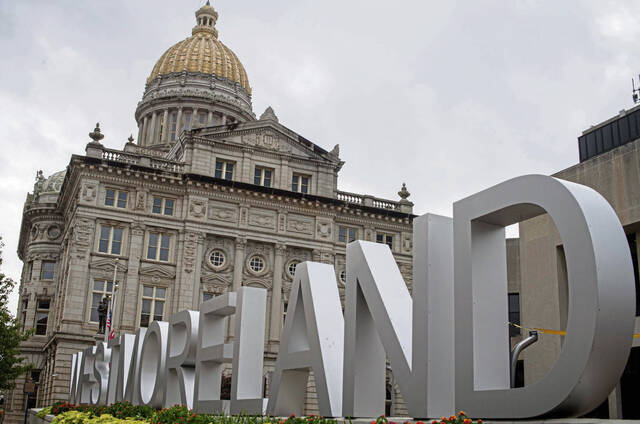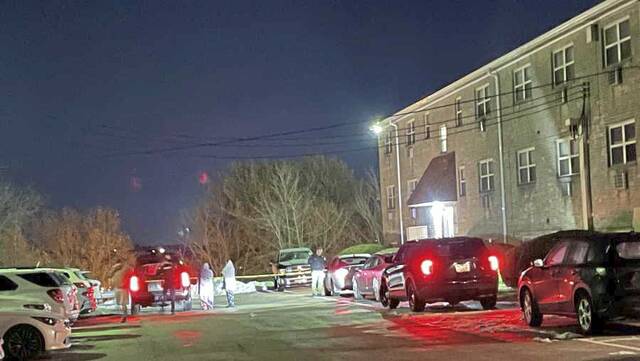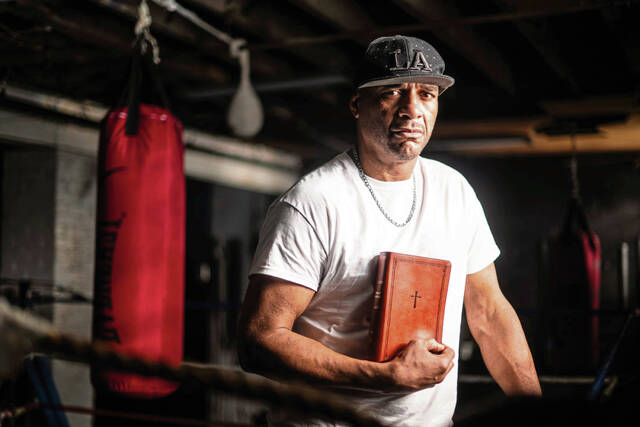When Harry Knights went to war in Europe, he picked up a camera.
His photographs captured the aftermath of a German massacre of concentration camp prisoners near the end of World War II.
“He was a witness, and he recorded what happened around him,” said James Knights, Harry Knights’ son. “He was drafted, and fate put him there with a camera in his hands.”
The public now can view those photographs for the first time through a series of free online presentations over the next month organized by the Seton Hill University National Catholic Center for Holocaust Education.
James Knights, a retired FBI agent and Cranberry resident, inherited more than 200 of his father’s photographs after his death in 2002.
Last year, he approached the center at the Greensburg university and offered to donate the photos.
“The many photographs Harry Knights took document Nazi war crimes and also offer insights into the experiences of the average American soldier as they uncovered the horrors that had occurred in concentration camps,” center Director James Paharik said in a statement. “The Knights Collection is a tremendous resource for Seton Hill students and scholars of the Holocaust as they study the human response to these atrocities.”
In April 1945, SS guards evacuated prisoners from the Dora-Mittelbau camp and subcamps in outlying areas onto trains in an effort to move them further into the interior of Germany as Americacn troops advanced, according to the U.S. Holocaust Memorial Museum.
More than 4,000 prisoners arrived in the Gardelegen area, where the trains were forced to stop because air raids had destroyed the rail lines. Prisoners were forced from the freight cars, with more than 1,000 herded into a barn. Guards locked the doors and burned it, setting fire to gasoline-soaked straw, according to the museum account.
The victims were mostly Polish prisoners. Nearly all died — either in the fire or from being shot while trying to escape.
Knights and the 102nd Infantry Division found the remains of the barn the next day. Inside the smoldering barn and in nearby trenches, soldiers found the remains of 1,016 prisoners, the Holocaust museum reports.
Knights’ photographs show American soldiers walking among the bodies.
James Knights said he hopes his father’s photographs educate people about one of the war’s lesser-known atrocities.
“It’s about education, and it’s about understanding,” he said. “I think Gardelegen is kind of in the shadows compared to the rest of the Holocaust.”
He hopes the photos stand as a memorial for the victims, about whom little is known.
Seton Hill’s series of presentations about the collections started Friday with a conversation with James Knights.
All of the online events are free, but those interested in attending should register online at setonhill.edu/centers-community-programs/holocaust-center/knights-collection.
Upcoming events
• A Conversation with James Knights, Friday at 3 p.m.
• The State of Art During WWII, Oct. 30, 6 p.m.
• Curator Docent Tour, Nov. 6, 6 p.m.
• The Death Marches and Gardelegen, Nov. 13, 6 p.m.
• The Knights Collection: Start to Finish, Nov. 20, 6 p.m.








